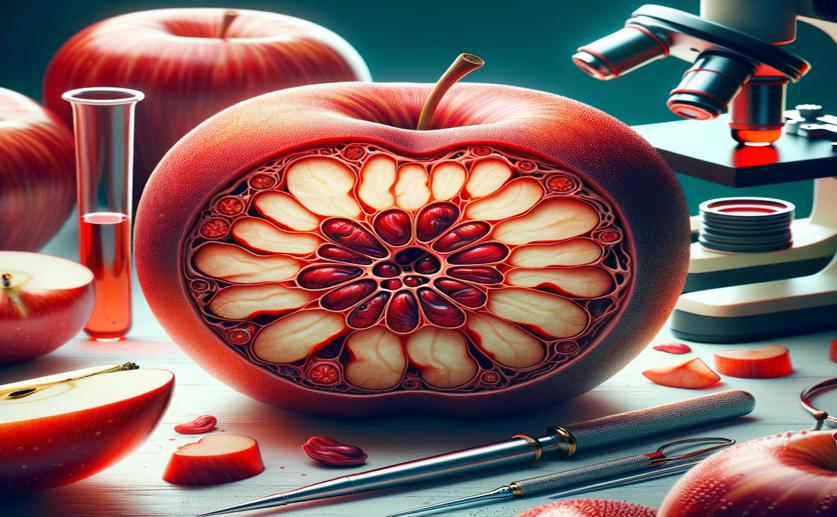
Image Analysis and Polyphenol Study Reveal Complexity of Red-Flesh Apple Traits
Jenn Hoskins
17th May, 2024

Image Source: Natural Science News, 2024
Key Findings
- Researchers at Univ Angers developed a new method to measure red-flesh color intensity and distribution in apples
- The new method uses advanced imaging techniques and statistical models to capture color variations more accurately
- This approach helps identify genetic factors influencing red-flesh color and can aid apple breeders in developing new cultivars
References
Main Study
1) Image analysis and polyphenol profiling unveil red-flesh apple phenotype complexity
Published 16th May, 2024
https://doi.org/10.1186/s13007-024-01196-1
Related Studies
2) Biosynthesis of plant pigments: anthocyanins, betalains and carotenoids.
3) Anthocyanins in vegetative tissues: a proposed unified function in photoprotection.
4) Eco-Evo-Devo of petal pigmentation patterning.



 17th May, 2024 | Jenn Hoskins
17th May, 2024 | Jenn Hoskins